
The Vallonean oaks at Karkos near Apiranthos
A very beautiful hiking trail leads from Apíranthos via the fortified monastery of Fotodótis to Danakós. The path leads past a picturesque plateau called Karkós, where some magnificent old oak trees grow. Several old stone houses bear witness to the former use of this area. Today, the former vineyards are grazed by sheep. Right next to the grove on the slope of Mount Korakiá lies the small church Panagía Chrysopigí, which was originally a Mycenaean tomb.
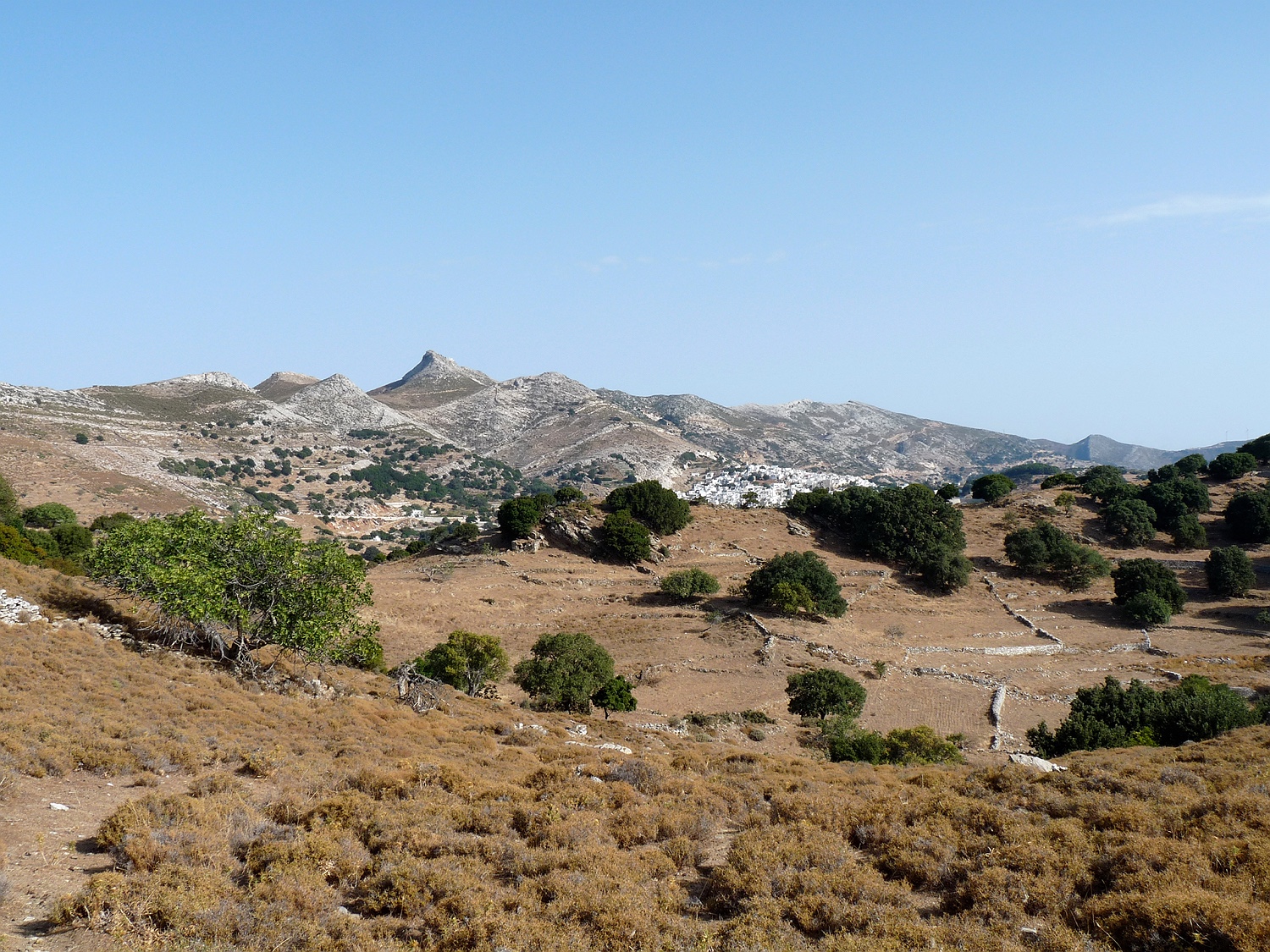
looking over the valley of Karkós towards Apíranthos

Toward the south lies Danakós; here the view of the fortified monastery Fotodótis.
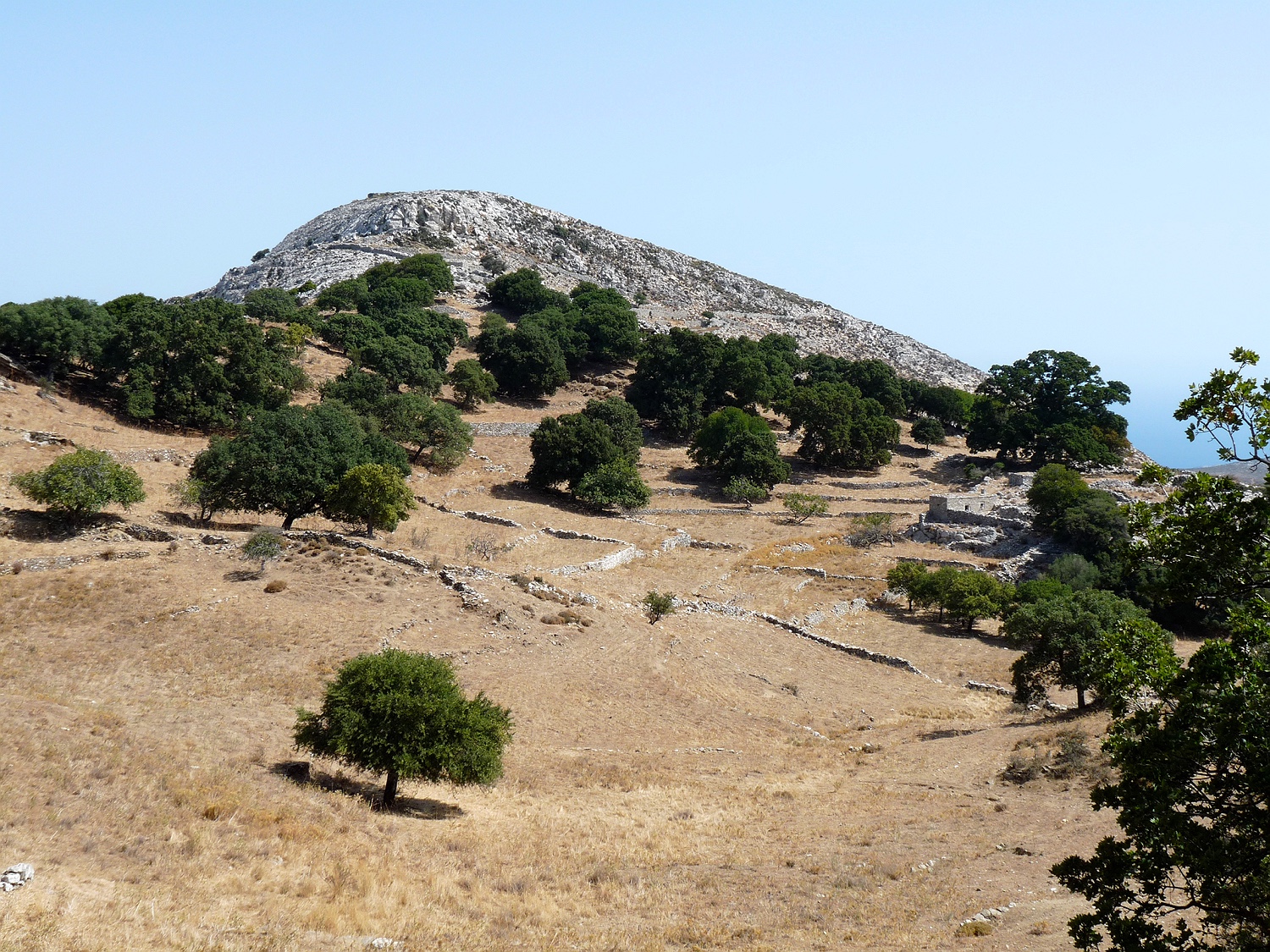
On the northern slope of the valley of Karkós stand magnificent Vallonean oaks.

In these beautiful old stone houses lived the farmers when they had work in the vineyards.
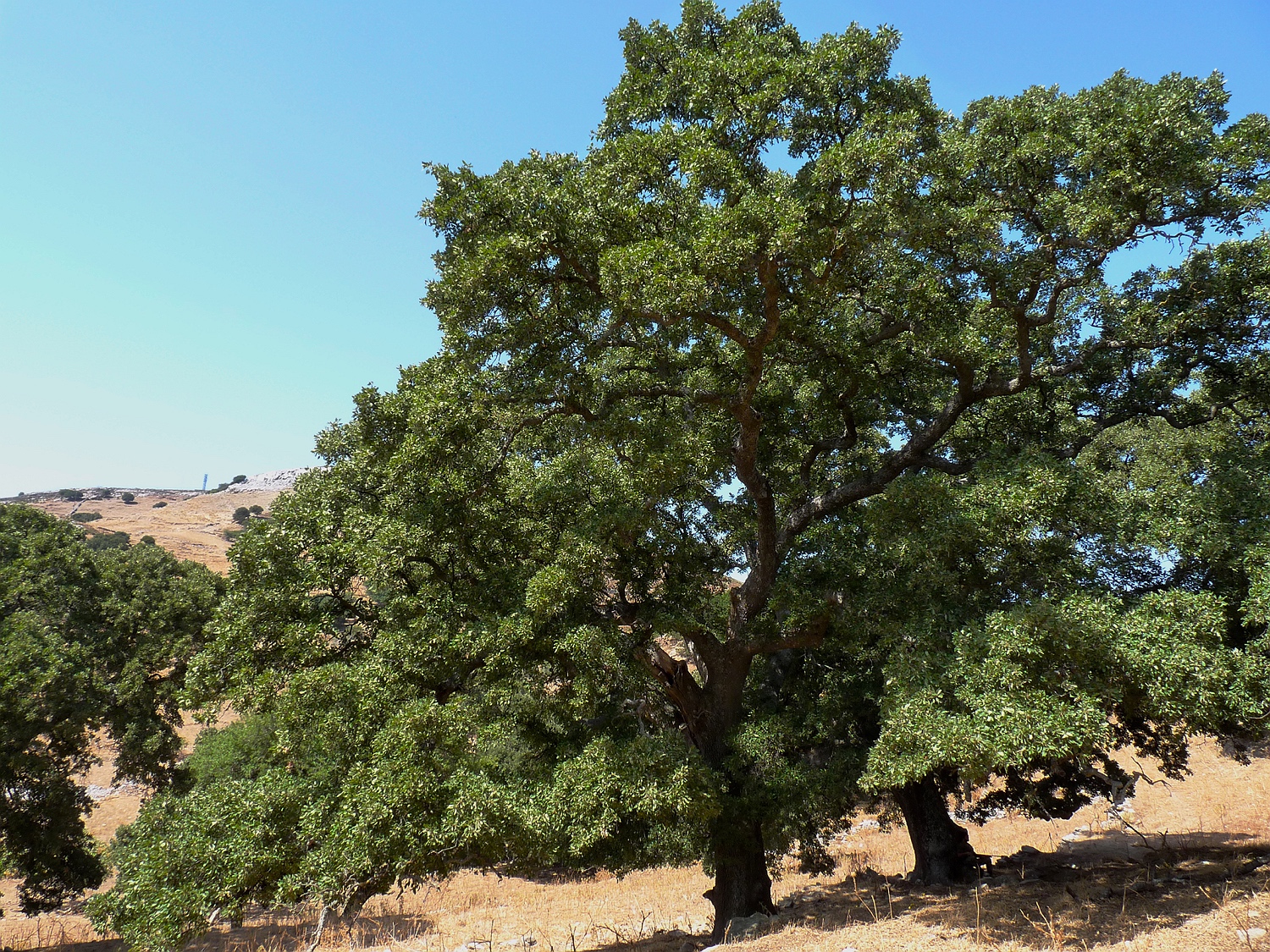
In the grove grow the largest oak trees I have ever seen.

Here in spring. The diameter of the crown from branch tip to branch tip is an incredible 30 metres.

Standing under this tree, it is easy to understand that oaks were once considered sacred trees!
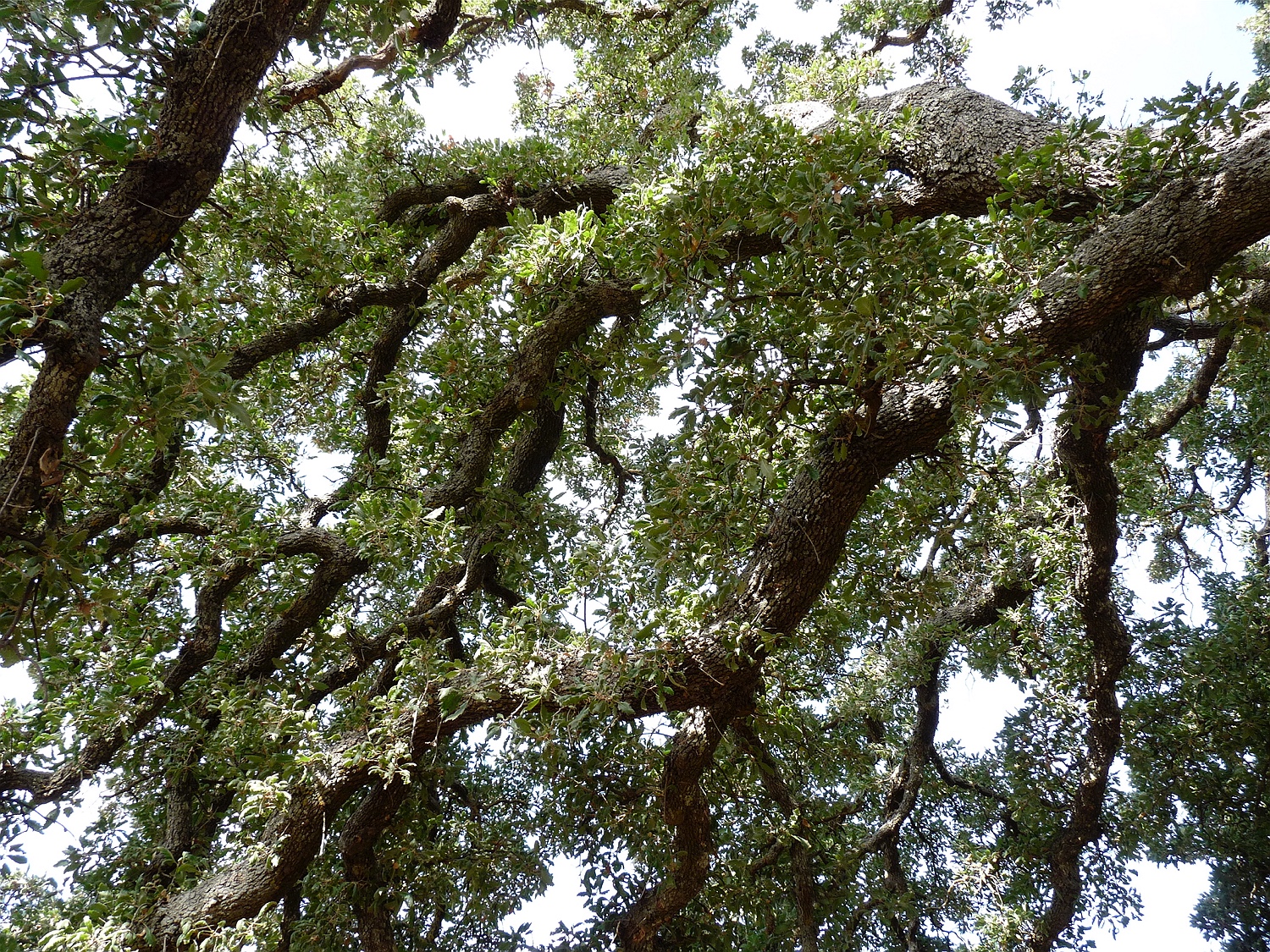
The gigantic branches bend down like a giant umbrella.
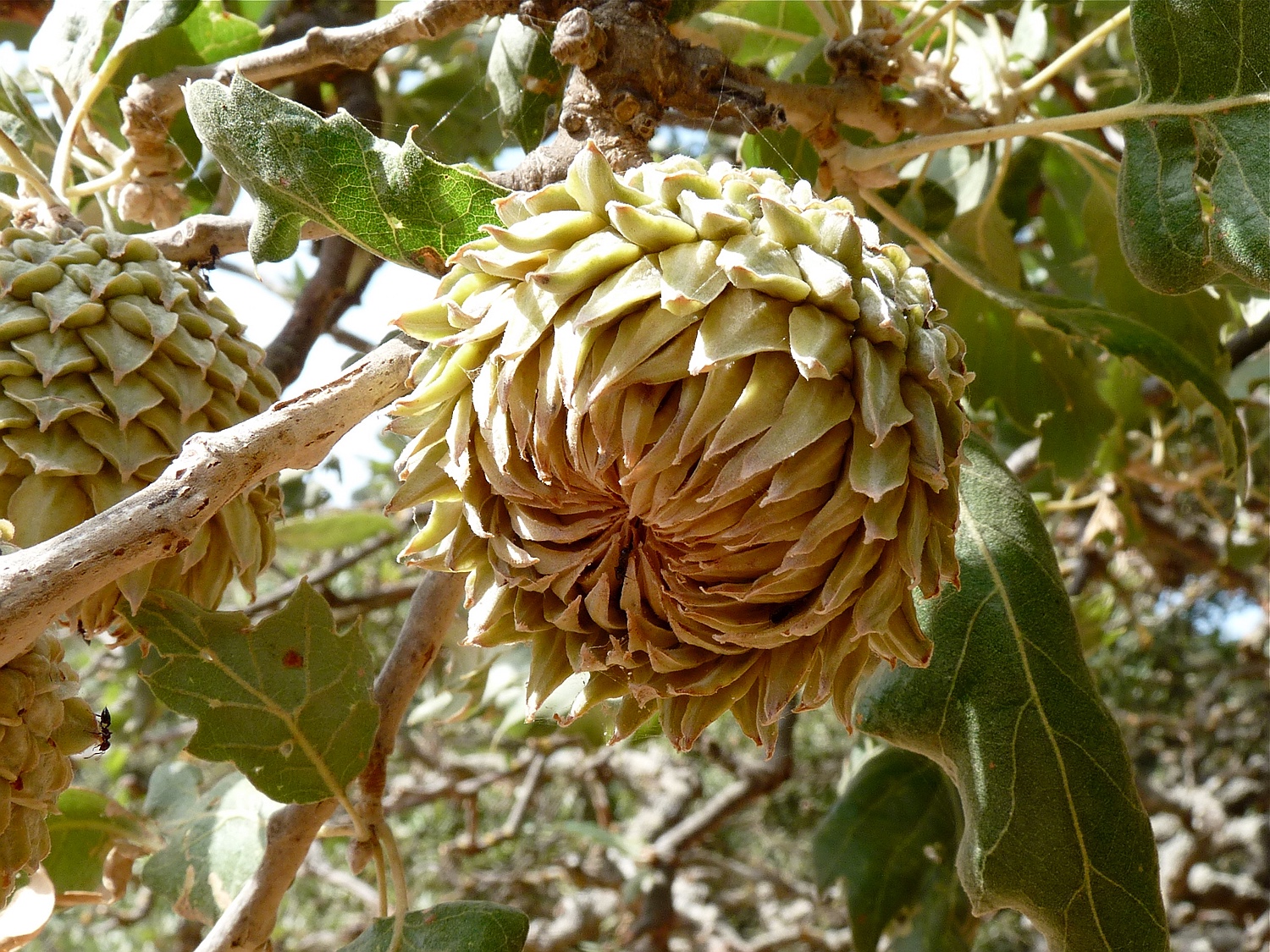
This grove consists of Vallonean oaks (Quercus macrolepis), a species that is widespread in south-east Europe and was probably introduced to Naxos. It can easily be recognised by its very large, spiny fruit cups. Like the bark of the tree, these fruit cups were once used for tanning.

The leaves are sharply toothed.

The branches are overgrown with lichens.

Here an oak in the upper part of the grove.

Strange pits have been carved into a large slate block under this oak tree.


What might they have been used for in the past?

Just above this spot lies the tiny church of Panagía Chrysopigí, originally a Mycenaean tomb.
see also:
Comments are closed.